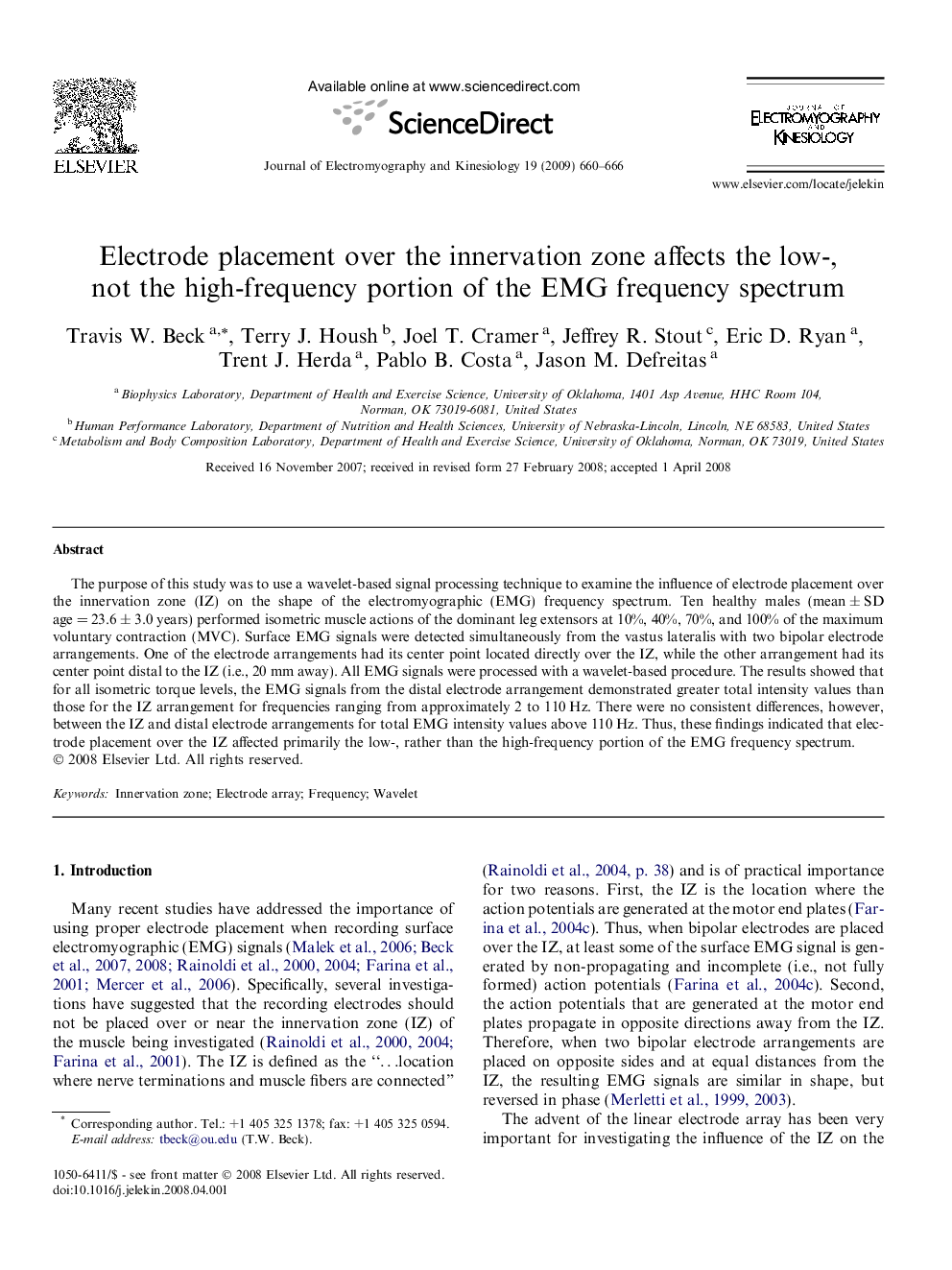| Article ID | Journal | Published Year | Pages | File Type |
|---|---|---|---|---|
| 4065455 | Journal of Electromyography and Kinesiology | 2009 | 7 Pages |
The purpose of this study was to use a wavelet-based signal processing technique to examine the influence of electrode placement over the innervation zone (IZ) on the shape of the electromyographic (EMG) frequency spectrum. Ten healthy males (mean ± SD age = 23.6 ± 3.0 years) performed isometric muscle actions of the dominant leg extensors at 10%, 40%, 70%, and 100% of the maximum voluntary contraction (MVC). Surface EMG signals were detected simultaneously from the vastus lateralis with two bipolar electrode arrangements. One of the electrode arrangements had its center point located directly over the IZ, while the other arrangement had its center point distal to the IZ (i.e., 20 mm away). All EMG signals were processed with a wavelet-based procedure. The results showed that for all isometric torque levels, the EMG signals from the distal electrode arrangement demonstrated greater total intensity values than those for the IZ arrangement for frequencies ranging from approximately 2 to 110 Hz. There were no consistent differences, however, between the IZ and distal electrode arrangements for total EMG intensity values above 110 Hz. Thus, these findings indicated that electrode placement over the IZ affected primarily the low-, rather than the high-frequency portion of the EMG frequency spectrum.
